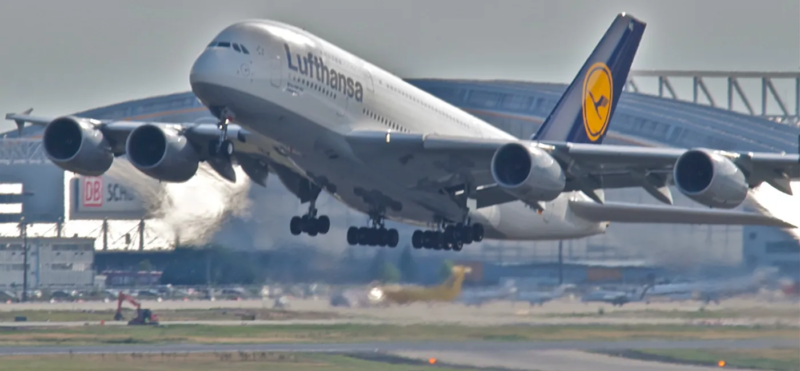The Airbus A380 Superjumbo Is Making a Comeback After Practically Going Extinct

The Airbus A380, the world’s largest passenger plane, is flying again after being grounded for most of the pandemic. Several airlines have resumed or announced the return of the double-decker aircraft, which can carry up to 853 people in a single-class configuration.
The A380 was launched in 2007 as a rival to Boeing’s 747, but it faced challenges from rising fuel costs, limited airport capacity, and competition from more efficient twin-engine planes. Airbus decided to stop producing the A380 in 2019, delivering the last one in 2021.
However, as travel demand recovers from the Covid-19 crisis, some carriers are finding new value in the superjumbo. Emirates, the largest operator of the A380 with 123 planes in its fleet, has brought back more than half of them to service and plans to fly up to 90 by the end of the year.
The Dubai-based airline has also introduced a new premium economy class on some of its A380s. The Airbus A380, the world’s largest passenger plane, offers a spacious and comfortable flying experience for travelers. But with different seating configurations and amenities across airlines.
The A380 has two full-length decks, with a total capacity of up to 853 passengers in a single-class layout. However, most airlines opt for a three- or four-class configuration, with first, business, premium economy, and economy classes, seating 450 to 500 passengers.
The first class on the A380 is usually located at the front of the main deck or the upper deck, depending on the airline. Some carriers, such as Emirates and Etihad, offer lavish features such as showers, bars, lounges, and private suites for their first-class passengers. The first-class seats are typically arranged in a 1-2-1 configuration, giving direct aisle access and privacy to all travelers.
The business class on the A380 is spread across both decks, with a 1-2-1 or 2-2-2 configuration. Some airlines, such as Lufthansa and British Airways, have half of their business-class seats facing backwards. The business-class seats are usually lie-flat or angled-flat, with some offering direct aisle access and others requiring passengers to step over their neighbors. Emirates has recently refreshed its business-class seats with new leather covers and wood finishing.
The premium economy and economy classes on the A380 are mostly located on the main deck, with some airlines also offering them on the upper deck. The premium economy seats are usually wider and have more legroom than the economy seats, with a 2-3-2 or 2-4-2 configuration. The economy seats are arranged in a 3-4-3 or 3-5-3 configuration, with some offering extra space near the exits or bulkheads.
Other airlines that have restored or scheduled the A380’s comeback include Etihad Airways, Qatar Airways, Singapore Airlines, British Airways, Korean Air, China Southern Airlines, and Qantas. Etihad celebrated the return of its first A380 with a festive flight from Abu Dhabi to London on July 25. Lufthansa is the latest to join the trend, announcing that it will bring back its 14 A380s in June 2023.
The A380 is known for its spacious and luxurious cabin, offering features such as showers, bars, lounges, and private suites on some airlines. Fans of the plane also appreciate its quiet and comfortable ride. The A380’s revival may be a sign of optimism for the aviation industry and a treat for travelers who enjoy flying on the giant aircraft.
Sources: AirGuide Business airguide.info, msn.com, businessinsider.com, cnn.com
